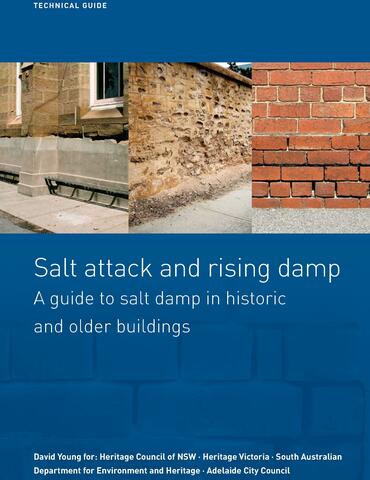Salt Attack and Rising Damp: A Guide to Salt Damp in Historic and Older Buildings
Salt attack and rising damp are two separate but interrelated processes; both must be understood if damage is to be minimised and if corrective measures are to be successful. While the term rising damp has been commonly used to cover both aspects, it tends to overlook the role of salt, an issue that will become increasingly important as our buildings get older and as our soils become more saline.
Salt damp is a term widely used in South Australia to refer to high salt concentrations associated with rising damp. The term is quite apt, as it combines the two concepts of salt attack and rising damp. Though less an issue in some parts, the problem of high salt concentrations affects buildings across much of Australia, and so the term salt damp has begun to be used in other States. Salt damp is used throughout this guide to mean the combination of salt attack and rising damp.
